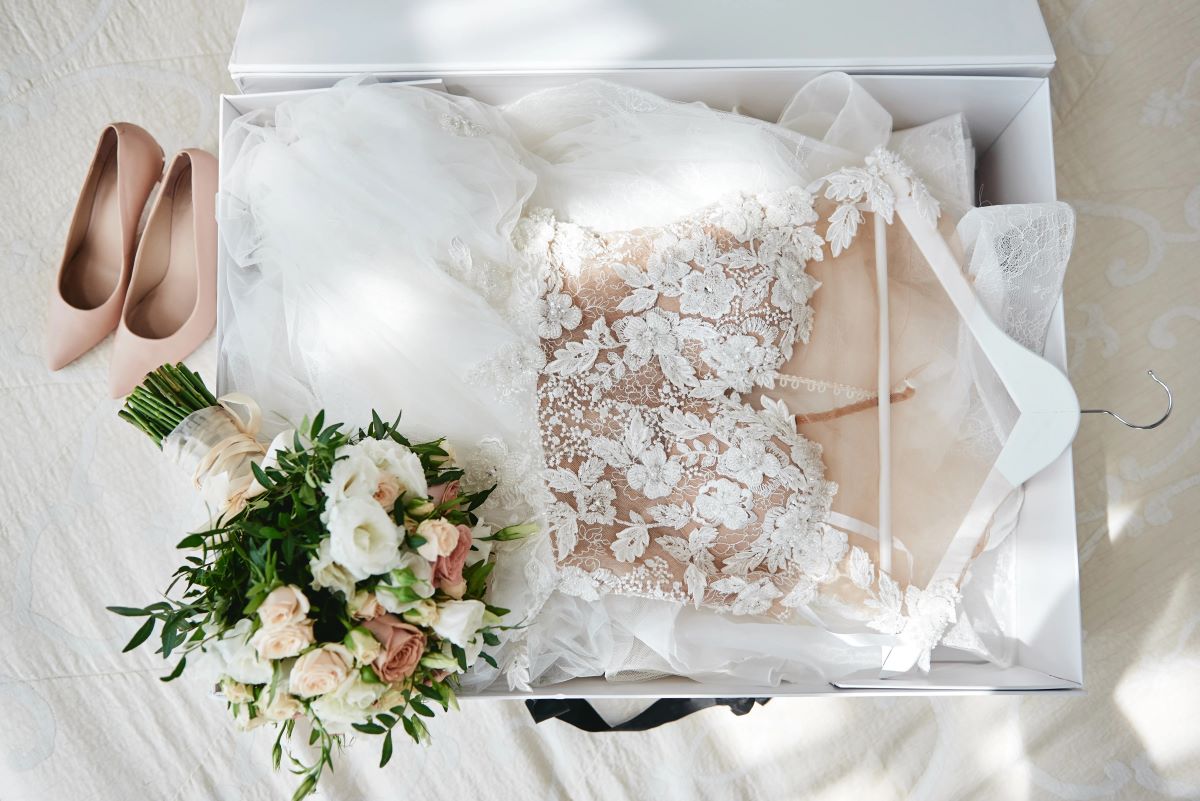

Articles
How To Store A Wedding Dress
Modified: April 22, 2024
Discover the best articles on how to properly store your wedding dress to ensure its pristine condition for years to come. Expert tips and advice for preserving your cherished memories.
(Many of the links in this article redirect to a specific reviewed product. Your purchase of these products through affiliate links helps to generate commission for Storables.com, at no extra cost. Learn more)
Introduction
When it comes to preserving your cherished wedding memories, properly storing your wedding dress is of utmost importance. A wedding dress holds sentimental value and is often passed down through generations as a cherished heirloom. Whether you plan to preserve it as a keepsake or hope to pass it on as a family tradition, taking the necessary steps to store your wedding dress correctly will ensure its longevity and pristine condition.
In this article, we will guide you through the process of storing your wedding dress, providing tips and suggestions to help you make the right decisions. From choosing the right storage location to cleaning, folding, and selecting the appropriate storage container, we will cover every aspect of preserving your wedding dress for years to come.
By following these guidelines, you can maintain the beauty and integrity of your wedding dress, allowing it to serve as a touching symbol of your special day in the years to come. So, let’s dive into the details of how to properly store your beloved wedding dress.
Key Takeaways:
- Preserve your wedding dress by choosing the right storage location, cleaning it thoroughly, and using acid-free tissue paper for protection. Regularly check on the dress to maintain its beauty and significance for years to come.
- Safeguard your wedding dress by removing accessories, folding or hanging it based on fabric type, and choosing an appropriate storage container. Store it in a cool, dry place and periodically inspect for any issues to ensure its longevity and sentimental value.
Read more: How To Store Wedding Dress Before Wedding
Choosing the Right Storage Location
Before you start packing away your wedding dress, it is crucial to select an appropriate storage location. The storage area should be cool, dry, and free from excessive humidity and temperature fluctuations. Direct sunlight should be avoided, as it can cause discoloration and damage to delicate fabrics.
An ideal storage location could be a closet in a room that is not frequently used. Make sure that the closet is away from any sources of moisture, such as bathrooms or laundry rooms. Additionally, avoid storing your dress in basements or attics, as they tend to have more extreme temperature and humidity fluctuations.
If you don’t have a suitable space in your own home, consider renting a climate-controlled storage unit. These units are designed to maintain a consistent temperature and humidity level, ensuring optimal conditions for preserving delicate fabrics.
Another important aspect to consider is the accessibility of the storage location. Ensure that the dress is easily accessible, as you might want to check on it, or even retrieve it for future occasions or events.
Remember to thoroughly clean and prepare the storage area before placing your wedding dress inside. Dust and dirt can settle on the dress over time, leading to potential damage or staining. Vacuum the area, wipe down any surfaces, and make sure it is free from any potential hazards like pests or moisture.
By choosing the right storage location, you are setting the foundation for preserving your wedding dress in optimal conditions, ensuring its longevity and beauty for years to come.
Cleaning the Wedding Dress
Before storing your wedding dress, it’s essential to thoroughly clean it to remove any dirt, stains, or oils that may have accumulated during your special day. Even if the dress appears clean, it is still recommended to go through the cleaning process to prevent any hidden stains from setting in over time.
When it comes to cleaning your wedding dress, it is best to consult with a professional dry cleaner who specializes in wedding gown preservation. These experts have the knowledge and experience to handle delicate fabrics and intricate designs without causing any damage.
Before taking your dress to the dry cleaner, make sure to point out any stains or spots and provide them with any information regarding the fabric or embellishments. This will help them determine the appropriate cleaning method. It’s important to remember that not all stains can be removed entirely, especially if they have set in for an extended period or if they were caused by substances that may have altered the fabric’s color.
If you prefer to clean the dress yourself, ensure that you read and follow the care instructions provided by the dress manufacturer. If the dress is machine-washable, use a gentle cycle and mild detergent. If it requires hand washing, fill a bathtub or large basin with lukewarm water and a gentle detergent, then carefully submerge the dress and gently agitate it. Avoid using harsh chemicals, bleach, or any products that contain fabric softeners.
After cleaning the dress, make sure to rinse it thoroughly to remove any remaining detergent. Gently squeeze out excess water without wringing or twisting the fabric. Lay the dress flat on a clean, absorbent towel or hang it on a padded hanger to air dry. It is crucial to avoid direct sunlight or excessive heat as they can cause discoloration or damage.
Once the dress is completely dry, inspect it carefully to ensure that all stains and spots have been removed. If you notice any remaining stains, consult a professional cleaner for further treatment. It is always better to take extra precautions rather than risking damage to the delicate fabric.
By properly cleaning your wedding dress, you will remove any potential sources of deterioration and ensure that it retains its pristine condition while in storage.
Dealing with Stains and Spots
Even with the utmost care, it’s not uncommon for wedding dresses to end up with stains and spots. Whether it’s from food and drinks, makeup, or accidental spills, addressing these stains promptly is crucial to prevent them from setting and becoming more challenging to remove.
If you notice a fresh stain on your wedding dress, act quickly by blotting the spot gently with a clean, white cloth or paper towel. Avoid rubbing the stain, as it can cause it to spread or set further. Instead, work from the outer edges of the stain towards the center to prevent it from spreading.
For water-soluble stains like those from beverages or clear liquids, you can try using a mild soap or detergent mixed with water. Apply a small amount of the solution to the stained area and gently dab it with a cloth or sponge. Rinse the area with clean water and blot dry.
For oil-based stains, such as makeup or greasy food, it is best to avoid using water. Instead, you can try using a stain remover specifically designed for delicate fabrics. Test the stain remover on a small, inconspicuous area of the dress first to ensure that it doesn’t cause any discoloration or damage.
It’s important to note that some stains may require professional attention. If you’re unsure about the appropriate method to remove a specific stain, it’s best to consult with a professional cleaner, preferably one who specializes in wedding gown preservation. They have the expertise and tools to remove stubborn stains while minimizing the risk of damage to the fabric.
Remember, prevention is key when it comes to dealing with stains on your wedding dress. Take measures to avoid potential accidents or spills during your wedding day by being mindful of food and drink choices, using fabric guards, and having a designated person keep an eye on your dress throughout the event.
By addressing stains and spots promptly and using the appropriate stain removal methods, you can ensure that your wedding dress remains pristine and stain-free during its time in storage.
Removing Accessories and Detachable Parts
Before storing your wedding dress, it’s important to remove any accessories and detachable parts. This includes items such as belts, sashes, bows, buttons, and detachable sleeves or trains. Removing these components will help preserve the integrity of the dress and prevent any potential damage during storage.
When removing accessories, be cautious and handle them with care to avoid any snags or tears. If the accessories are sewn onto the dress, consult a professional seamstress for guidance on how to safely detach them without causing any damage.
If the accessories are not permanently attached, place them in a separate bag or container to keep them organized and prevent any tangling or misplacement. Be sure to label the bag or container so that you can easily identify the corresponding accessories when you wish to use them again.
In addition to accessories, it’s important to remove any detachable parts of the dress, such as skirts, overlays, or trains. These pieces can be bulky and take up unnecessary space when storing the dress. Gently detach them according to the dress’s design or consult a professional if you’re unsure about the proper removal procedure.
Once the accessories and detachable parts have been removed, carefully examine the dress to ensure that no remnants or loose threads remain. Check for any loose beads, sequins, or appliques and make any necessary repairs or adjustments before moving on to the next steps of the storage process.
By removing accessories and detachable parts, you’ll help protect your dress from potential damage and ensure that all components stay organized and intact during storage.
Read more: How To Store Wedding Dress
Folding vs. Hanging the Wedding Dress
One question that often arises when it comes to storing a wedding dress is whether it should be folded or hung. The answer depends on various factors, including the fabric, weight, and design of the dress.
If your wedding dress is made from a delicate and lightweight fabric, such as silk or chiffon, it is generally recommended to fold it rather than hang it. Hanging these types of fabrics can put unnecessary strain on the dress, causing it to stretch or distort over time. Additionally, beaded or heavily embellished dresses may be too heavy to hang without risk of damage or deformation.
When folding your wedding dress, take extra care to avoid creasing or creating sharp folds in the fabric. Use acid-free tissue paper to pad and protect the folds, placing it between the layers of fabric to prevent them from rubbing against each other. This will help maintain the dress’s shape and minimize the risk of wrinkling or permanent creases.
On the other hand, if your wedding dress is made from a more structured and sturdy fabric, such as satin or taffeta, hanging may be a suitable option. Hanging allows the dress to hang freely, reducing the chance of wrinkles and preserving its shape and structure.
When hanging your wedding dress, use a padded hanger made specifically for delicate garments. Avoid wire or plastic hangers, as they can cause indentations or stretch the fabric. Gently drape the dress over the hanger, ensuring that the weight is evenly distributed and that the straps or sleeves are properly supported.
Whether you choose to fold or hang your wedding dress, it is essential to store it in a location where it won’t be disturbed or crushed. Make sure that it is not in contact with any rough surfaces or objects that could snag or damage the fabric.
Remember, each wedding dress is unique, and the best method for storage may vary. Consider consulting with a professional wedding dress preserver or seamstress if you are uncertain about the ideal approach for your specific dress.
By carefully considering the fabric and design of your wedding dress, you can make an informed decision on whether to fold or hang it, ensuring its longevity and preserving its beauty for years to come.
Store your wedding dress in a cool, dry place away from direct sunlight and moisture. Use a padded hanger to support the weight of the dress and cover it with a breathable garment bag to protect it from dust.
Using Acid-Free Tissue Paper for Protection
When it comes to storing a wedding dress, proper preservation techniques are essential to maintain its quality and ensure its longevity. One crucial element in protecting your dress is the use of acid-free tissue paper.
Acid-free tissue paper serves as a protective barrier between the delicate fabric of your wedding dress and any potential sources of damage, such as dust, moisture, or contact with other materials.
Why acid-free tissue paper? Unlike standard tissue paper, which may contain acidic substances that can deteriorate fabric over time, acid-free tissue paper is specially manufactured to have a neutral pH level. This pH neutrality helps prevent yellowing, discoloration, and fabric degradation often associated with acid exposure.
When properly using acid-free tissue paper, the goal is to fold and layer it between different parts of the dress, preventing them from rubbing against each other and causing friction or creasing. Here are the steps to follow:
- Preparation: Ensure that your hands are clean and free of any oils or lotions that may transfer onto the tissue paper or dress.
- Layering: Start by laying a sheet of acid-free tissue paper on a flat, clean surface. Gently fold one part of the dress and place it on top of the tissue paper, making sure to cover any exposed areas. Add another layer of tissue paper and fold the next part of the dress. Repeat this process until the entire dress is folded and protected.
- Padding: Use small, crumpled pieces of acid-free tissue paper to carefully fill in any empty spaces or gaps within the folds of the dress. This provides additional support, helping maintain the dress’s shape and preventing it from sagging or losing its structure.
- Final Covering: Once all folds and gaps are padded, gently place a final sheet of acid-free tissue paper over the entire dress as a protective cover. This provides an extra layer of cushioning and shields the dress from dust and light exposure.
It’s important to note that while acid-free tissue paper offers excellent protection, it is not a substitute for proper cleaning and storage techniques. Before using acid-free tissue paper, ensure that your dress is clean and dry to prevent the trapping of any moisture or stains.
Using acid-free tissue paper when storing your wedding dress will help maintain its pristine condition, preserving its beauty and ensuring that it remains a treasured keepsake for years to come.
Wrapping the Dress Properly
Once you have folded your wedding dress and used acid-free tissue paper to protect and cushion it, the next step is to wrap it properly. Wrapping the dress ensures that it remains safe and secure during storage, preventing exposure to dust, light, and potential damage.
Here are some steps to follow when wrapping your wedding dress:
- Use a Plastic Cover: Before wrapping the dress in any other material, consider placing it in a plastic cover or bag. This provides an additional layer of protection against moisture and dust. However, ensure that the plastic cover is made from breathable material to prevent the build-up of humidity.
- Choose a Breathable Fabric: To wrap the dress, opt for a breathable fabric like unbleached muslin or cotton. These materials allow air circulation, reducing the risk of mold or mildew formation.
- Place the Folded Dress on the Fabric: Lay out the chosen fabric on a clean surface and gently place the folded dress in the center. Make sure the dress is centered and does not extend beyond the edges of the fabric.
- Wrap the Dress Carefully: Start by folding one side of the fabric over the dress, ensuring that it covers the entire length and width. Next, fold the opposite side over the dress, creating a secure and snug enclosure.
- Secure the Wrap: Use acid-free, cotton twill tape or fabric ties to secure the wrapped dress. Avoid using any plastic materials or adhesive tapes that could cause damage to the fabric.
When wrapping the dress, it’s essential to strike a balance between security and allowing the fabric to breathe. Avoid wrapping it too tightly, as this can damage delicate embellishments or crease the fabric. On the other hand, avoid leaving the dress too loose, as it may shift and become wrinkled during storage.
Remember to label the fabric wrap with the details of the dress, including the style, designer, and any other information that may be helpful in the future. This will help you identify the dress easily if you need to access it or pass it on to future generations.
By properly wrapping your wedding dress, you provide an extra layer of protection, ensuring that it remains in pristine condition while stored away.
Choosing the Appropriate Storage Container
After properly folding, padding, and wrapping your wedding dress, the next consideration is selecting the right storage container. The container you choose should provide protection against light, dust, moisture, and any potential damage that may occur during storage.
Here are a few tips to help you choose the appropriate storage container for your wedding dress:
- Size and Shape: Select a storage container that is large enough to accommodate your folded and wrapped dress without causing any unnecessary compression. The dress should have enough room to breathe and maintain its shape. Opt for a container that allows the dress to lay flat rather than being forced into a tight space.
- Durable Materials: Look for a container made from sturdy and durable materials such as acid-free cardboard or plastic. Ensure that the material is free from any dyes or coatings that could potentially transfer onto the fabric of the dress.
- Sealability: Choose a container with a secure and tight-fitting lid or closure mechanism to keep out dust, light, and pests. This will help maintain the integrity of the dress and protect it from potential damage.
- Stackability: If you plan to store multiple items along with your wedding dress, consider containers that are stackable. This will optimize space utilization and prevent any potential crushing or damage to the dress.
- Breathability: Ensure that the container allows for some air circulation to prevent the build-up of humidity. This helps regulate temperature and reduces the risk of mold or mildew formation.
- Desiccant Packs: Consider including desiccant packs in the storage container. These packs help absorb excess moisture and maintain a dry environment, further protecting your dress from humidity-related damage.
It’s important to note that while a storage container provides an added layer of protection, it’s still essential to store the container in an appropriate location. Choose a cool and dry area, away from direct sunlight, extreme temperatures, and humidity fluctuations.
Remember to label the outside of the container with clear and visible information about the contents. This will make it easier to identify and locate your wedding dress in the future, especially if you have multiple storage containers.
By choosing the appropriate storage container, you ensure that your wedding dress remains well-protected and preserved for years to come, ready to be cherished or passed down as a treasured heirloom.
Read more: How To Store Wedding Dress After Wedding
Storing the Wedding Dress in a Cool and Dry Place
Once your wedding dress is properly folded, wrapped, and placed inside a suitable storage container, it’s crucial to find the ideal location to store it. Aim to store your wedding dress in a cool and dry place to minimize the risk of damage, discoloration, and deterioration over time.
Here are some important considerations when choosing a storage location:
- Avoid Direct Sunlight: Sunlight can cause fading and discoloration in fabrics, especially delicate ones. Choose a storage area away from windows or any other source of direct sunlight to preserve the color and vibrancy of your dress.
- Control Humidity: Excessive humidity can lead to mold, mildew, and fabric deterioration. Avoid storing your dress in areas with high humidity, such as basements or attics. Instead, opt for a dry and well-ventilated space.
- Temperature Regulation: Extreme temperature fluctuations can damage fabrics and create an unfavorable environment for preservation. Store your wedding dress in a location with a consistent temperature, ideally between 60°F and 70°F (15°C and 21°C).
- Proximity to Water: Ensure that the storage location is not near any potential sources of water, such as pipes, water heaters, or areas prone to leaks. Even a small water incident can cause irreversible damage to your dress.
- Protection from Pests: Take measures to protect your dress from pests, such as moths and insects. Avoid storing it in areas susceptible to pest infestations and consider using mothballs or lavender sachets as additional deterrents.
Additionally, it’s a good practice to periodically check on your wedding dress during storage. This allows you to ensure that it remains in proper condition and address any potential issues promptly. Gently unfold and refold the dress, taking care not to snag or damage any delicate areas in the process.
Remember to handle your dress with clean and dry hands whenever you inspect it. Avoid applying any lotions, oils, or fragrances that could transfer to the fabric.
By storing your wedding dress in a cool and dry place, you create the optimal environment for its preservation. This ensures that your dress remains in excellent condition, ready to be cherished and admired for years to come.
Checking on the Dress Periodically
While your wedding dress is safely stored away, it’s important to periodically check on it to ensure its condition and make any necessary adjustments or interventions. Regular inspections will help you identify any potential issues early on and take appropriate measures to preserve the dress’s beauty and longevity.
Here are some key points to consider when checking on your wedding dress:
- Frequency: Aim to check on your dress at least once every six months or annually, depending on the storage duration and conditions. This will allow you to monitor for any changes or issues that may arise.
- Inspection Process: When inspecting your dress, find a clean and well-lit area to unfold and examine it carefully. Look for any signs of discoloration, fabric degradation, or pest activity. Check for loose threads, missing embellishments, or any other damage that may require attention.
- Appropriate Handling: Always handle your dress with clean and dry hands or wear clean white cotton gloves to prevent any oils or dirt from transferring onto the fabric. Be gentle when unfolding or refolding the dress to avoid causing any unnecessary creases or damage.
- Document and Photograph: Take photos of the dress during each inspection to document its condition over time. This will serve as a visual reference and help you track any changes or deterioration. Store these photos alongside any certificates, receipts, or other documentation related to the dress.
- Addressing Issues: If you notice any problems during your inspection, such as loose threads, missing buttons, or stains that weren’t previously treated, take prompt action. Consult with a professional wedding gown specialist or a reputable dry cleaner who specializes in wedding dress preservation for guidance on the best course of action.
It’s crucial to re-wrap and store the dress properly after each inspection, using acid-free tissue paper and a breathable fabric wrap. Ensure that the storage container is securely closed to prevent dust or light from entering.
By regularly checking on your wedding dress, you can detect any signs of deterioration early on and take appropriate measures to maintain its beauty and integrity. This proactive approach ensures that your dress remains a treasured keepsake that can be passed down through generations.
Conclusion
Your wedding dress holds immense sentimental value, representing one of the most memorable days of your life. Properly storing and preserving your wedding dress ensures that its beauty and significance are maintained for years to come. By following the steps outlined in this article, you can confidently safeguard your dress and pass it down as a cherished heirloom or keep it as a precious memento.
From choosing the right storage location to cleaning, folding or hanging the dress, and using acid-free tissue paper for protection, each step plays a crucial role in preserving your dress’s condition. Properly preparing and wrapping the dress in a suitable storage container provides an additional layer of defense against damage, dust, and light exposure.
Remember to store your wedding dress in a cool, dry place away from direct sunlight and extreme temperatures. Checking on the dress periodically allows you to monitor its condition and address any potential issues promptly. If necessary, consult professionals with expertise in wedding dress preservation to ensure the best care for your gown.
By investing time and effort into the proper storage and care of your wedding dress, you can ensure that it remains a cherished symbol of love and celebration. Years down the line, when you open the storage container and see your dress in pristine condition, you’ll experience the joy and nostalgia that comes with reliving those precious memories once again.
Preserving your wedding dress is not just about protecting a garment; it’s about preserving the emotions, memories, and moments that it represents. With the tips and guidelines provided in this article, you can confidently store your wedding dress and ensure that its beauty and significance will be cherished for generations to come.
Frequently Asked Questions about How To Store A Wedding Dress
Was this page helpful?
At Storables.com, we guarantee accurate and reliable information. Our content, validated by Expert Board Contributors, is crafted following stringent Editorial Policies. We're committed to providing you with well-researched, expert-backed insights for all your informational needs.
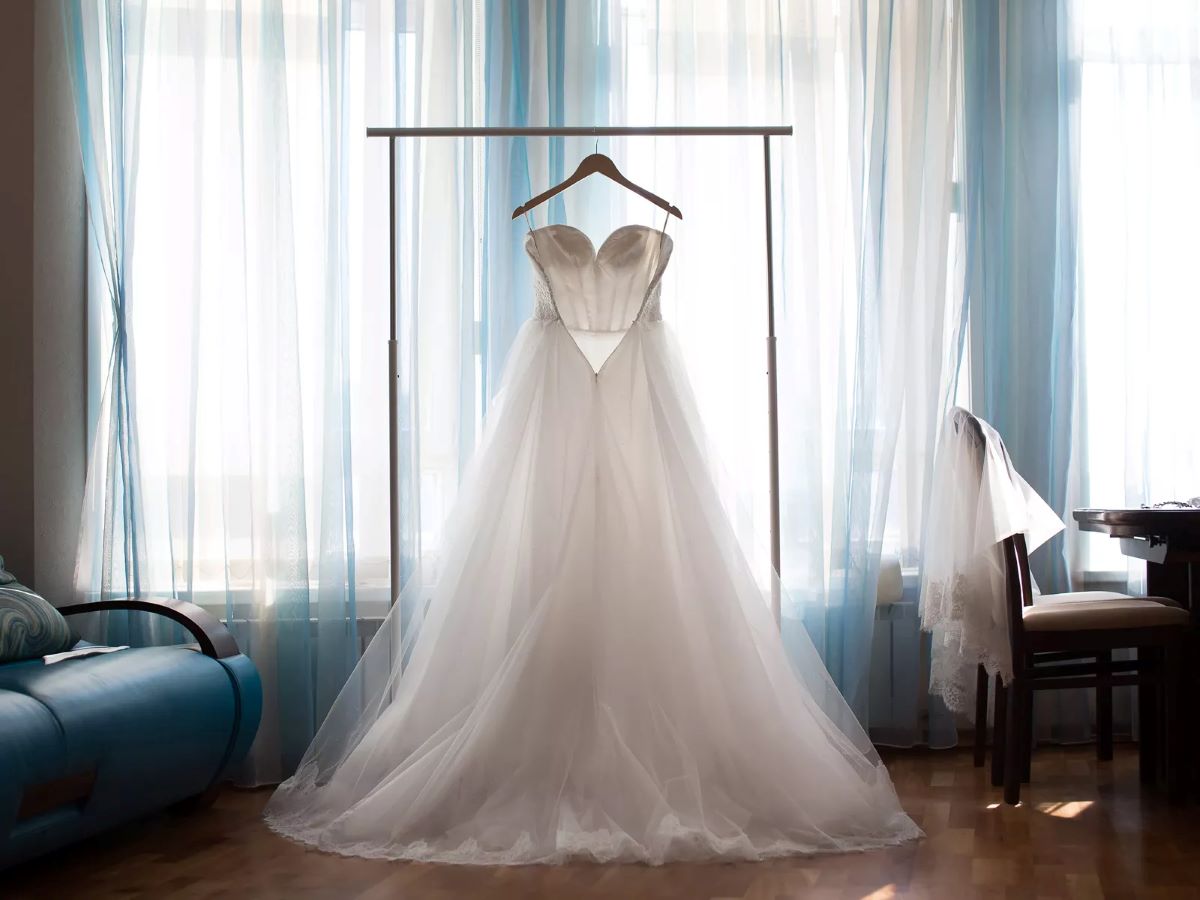
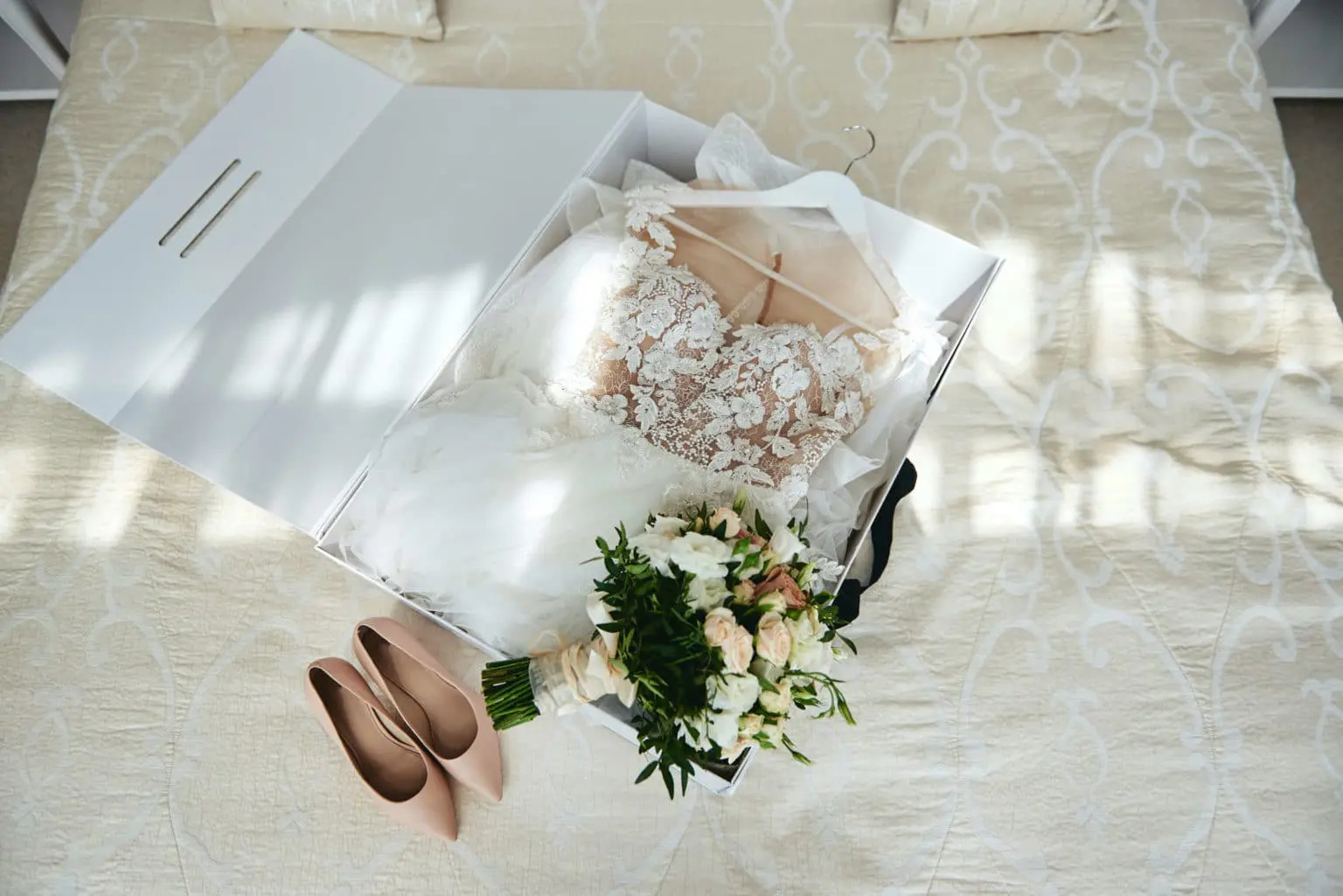
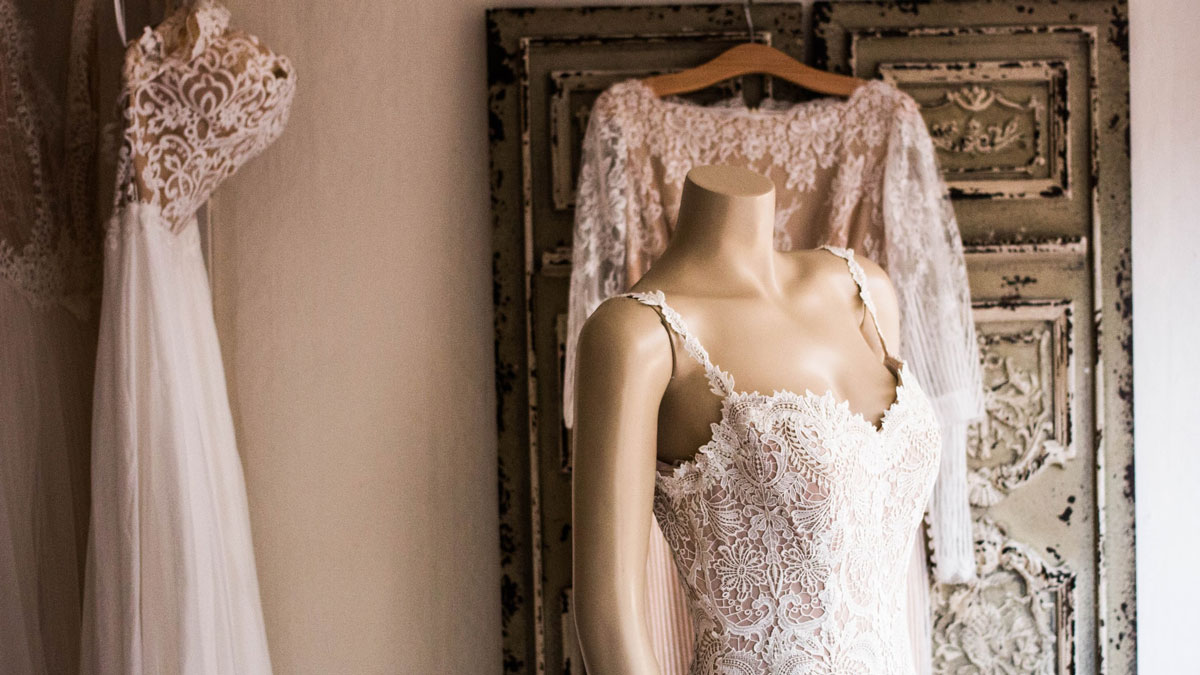
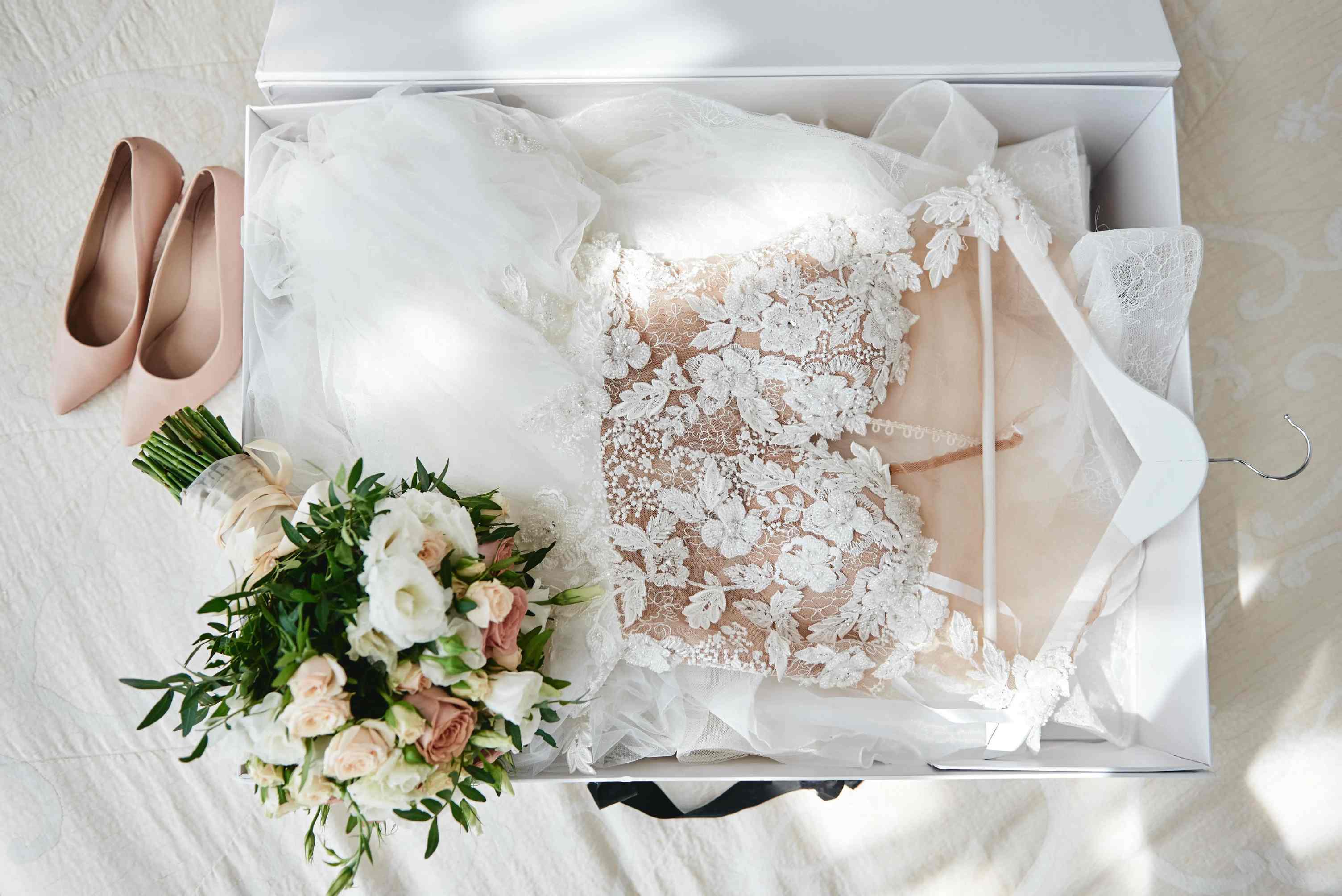
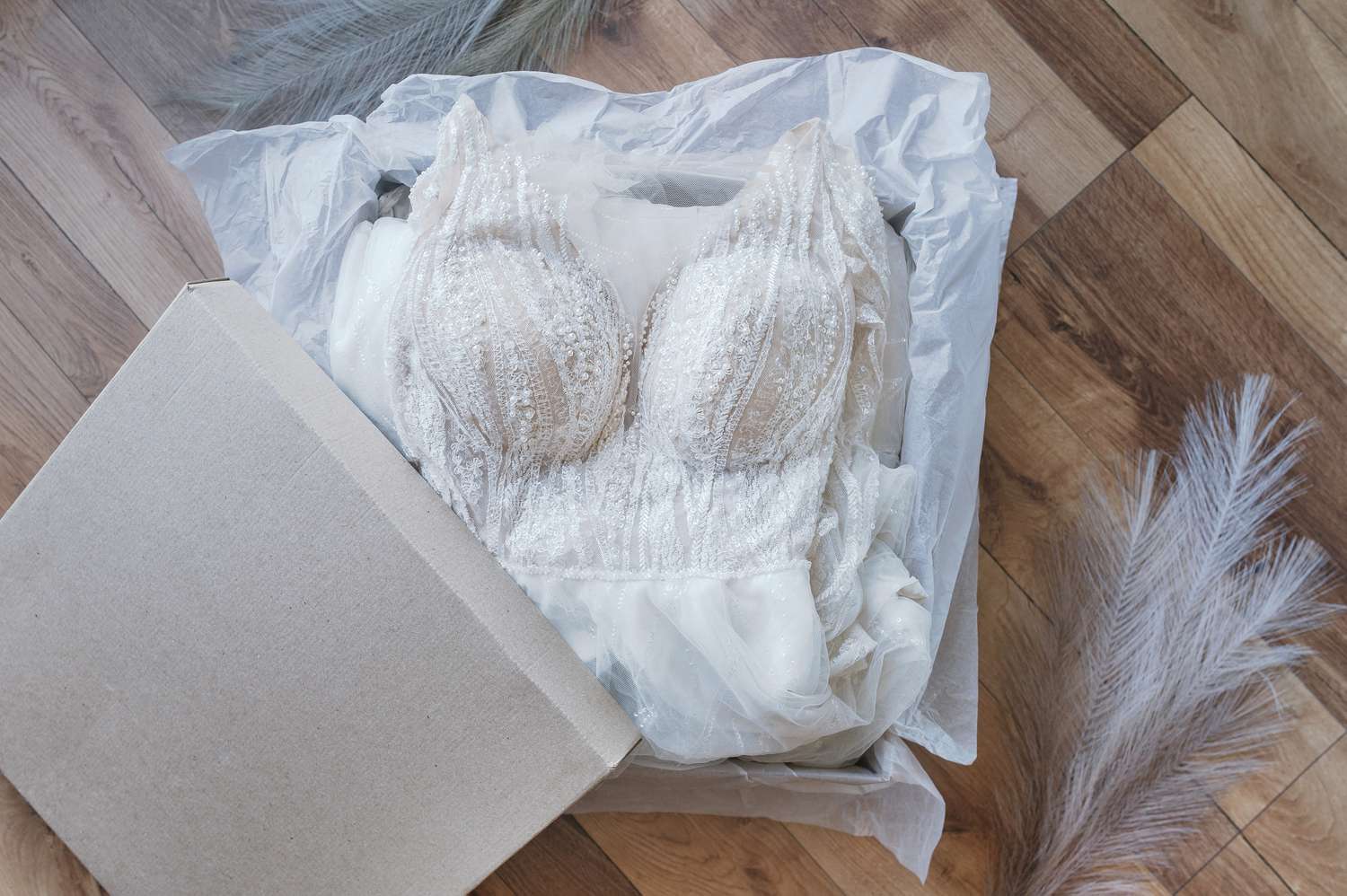






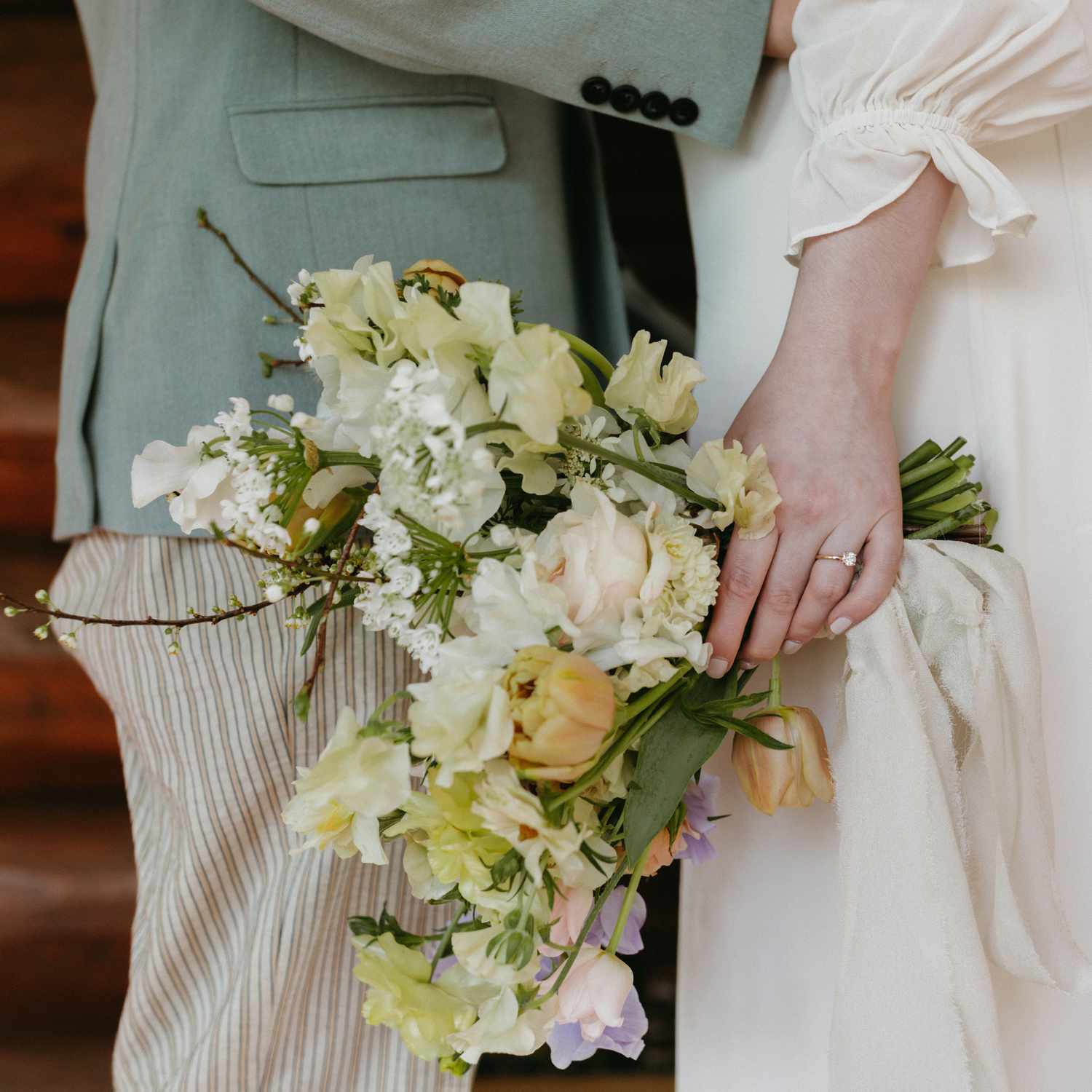


0 thoughts on “How To Store A Wedding Dress”